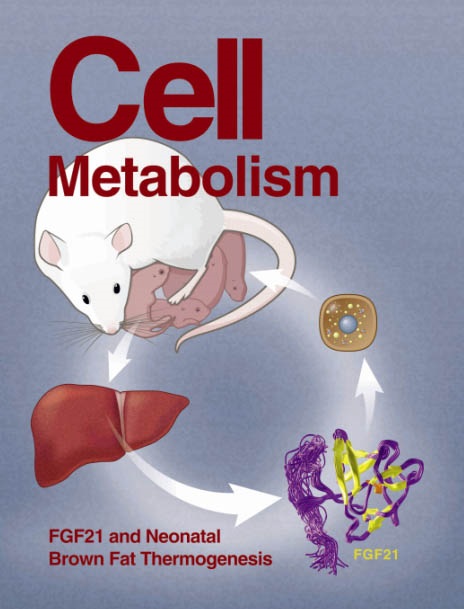FGF21通过对中枢神经系统和肝脏的协同作用逆转MASH
IF 30.9
1区 生物学
Q1 CELL BIOLOGY
引用次数: 0
摘要
代谢功能障碍相关脂肪性肝病(MASLD)及其进行性形式代谢功能障碍相关脂肪性肝炎(MASH)代表着日益增长的公共卫生负担,治疗选择有限。最近的研究表明,基于成纤维细胞生长因子21 (FGF21)的类似物可以显著改善MASH,但这种作用的机制尚不清楚。在这里,我们证明了FGF21对逆转MASH的有益代谢作用是通过不同的机制介导的,可以独立降低肝脏甘油三酯和胆固醇水平。具体来说,FGF21直接向中枢神经系统(CNS)的谷氨酸能神经元发出信号,刺激肝脏甘油三酯降低和纤维化逆转,而FGF21直接向肝细胞发出信号,对于降低小鼠肝脏胆固醇水平是必要和充分的。在机制上,我们发现FGF21在中枢神经系统中起作用,增加肝脏的交感神经活动,从而抑制肝脏新生脂肪生成。这些结果为治疗MASH的有希望的药理学靶点提供了重要的见解。本文章由计算机程序翻译,如有差异,请以英文原文为准。

FGF21 reverses MASH through coordinated actions on the CNS and liver
Metabolic dysfunction-associated steatotic liver disease (MASLD) and its progressive form, metabolic dysfunction-associated steatohepatitis (MASH), represent a growing public health burden with limited therapeutic options. Recent studies have revealed that fibroblast growth factor 21 (FGF21)-based analogs can significantly improve MASH, but the mechanisms for this effect are not well understood. Here, we demonstrate that the beneficial metabolic effects of FGF21 to reverse MASH are mediated through distinct mechanisms to independently lower hepatic triglyceride and cholesterol levels. Specifically, FGF21 signaling directly to glutamatergic neurons in the central nervous system (CNS) stimulates hepatic triglyceride reduction and reversal of fibrosis, whereas FGF21 signaling directly to hepatocytes is necessary and sufficient to reduce hepatic cholesterol levels in mice. Mechanistically, we show that FGF21 acts in the CNS to increase sympathetic nerve activity to the liver, which suppresses hepatic de novo lipogenesis. These results provide critical insights into a promising pharmacological target to treat MASH.
求助全文
通过发布文献求助,成功后即可免费获取论文全文。
去求助
来源期刊

Cell metabolism
生物-内分泌学与代谢
CiteScore
48.60
自引率
1.40%
发文量
173
审稿时长
2.5 months
期刊介绍:
Cell Metabolism is a top research journal established in 2005 that focuses on publishing original and impactful papers in the field of metabolic research.It covers a wide range of topics including diabetes, obesity, cardiovascular biology, aging and stress responses, circadian biology, and many others.
Cell Metabolism aims to contribute to the advancement of metabolic research by providing a platform for the publication and dissemination of high-quality research and thought-provoking articles.
 求助内容:
求助内容: 应助结果提醒方式:
应助结果提醒方式:


